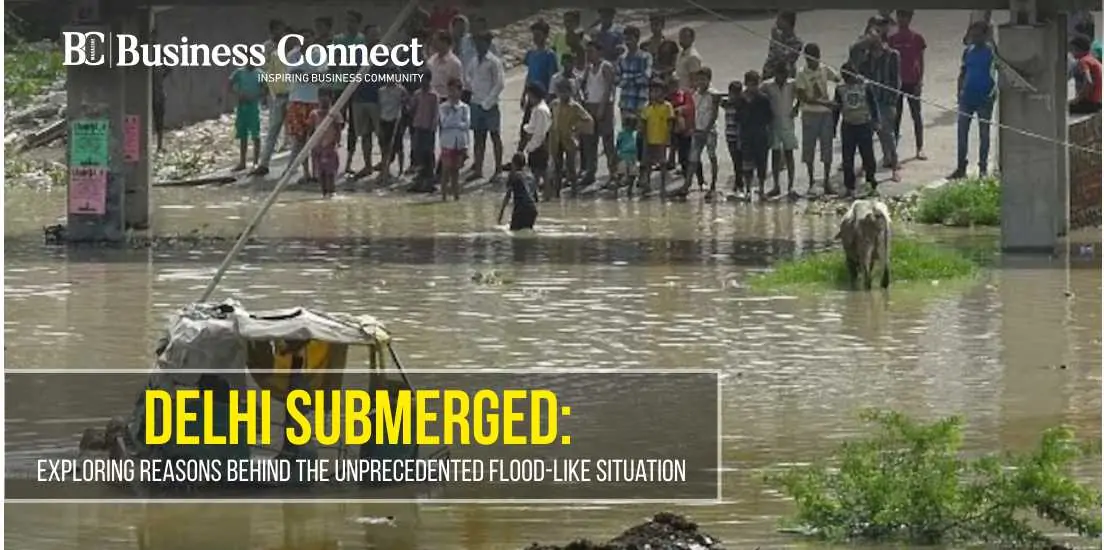Delhi Submerged: Exploring Reasons Behind the Unprecedented Flood-Like Situation
Written by Sanjay Kumar
After enduring relentless rainfall for three consecutive days, Delhi finds itself on high alert due to severe flooding caused by the rising water levels of the Yamuna River. Having surpassed the danger mark of 205 meters on Tuesday (July 11), the water level continues to escalate.
At 8 am today, the water level reached a staggering 208.48 meters, surpassing the previous record of 207.49 meters set in 1978.
Officials attribute the flood-like conditions in parts of the national capital to the heavy rain in Delhi and its surrounding areas, as well as the release of water from the Hathni Kund Barrage in Haryana. However, experts suggest that additional factors may have contributed to Delhi’s ongoing crisis.
According to a senior official from the Central Water Commission (CWC), “We have observed that the water released from the Hathnikund Barrage reached Delhi at a faster rate compared to previous years. The primary reasons could be encroachment and siltation. In the past, the water would have had more space to flow. Now, it passes through a narrower cross-section.”
The barrage has filled up due to intense rainfall in Himachal Pradesh, further north, where the monsoon has caused widespread devastation.
It takes approximately two to three days for the water from the barrage in Yamunanagar, Haryana, located around 180 kilometers from the national capital, to reach Delhi.
Manu Bhatnagar, Principal Director of the Natural Heritage Division at the Indian National Trust for Art and Cultural Heritage (INTACH), identified the unusually heavy rainfall over a short period as the primary cause of the swollen Yamuna.
“If the same amount of water were to fall over a longer duration, it would not lead to such a situation as it allows more time for the water to pass through. However, even a lesser amount of precipitation can result in a higher water level downstream if it occurs within a shorter time frame,” he explained.
Bhim Singh Rawat, associate coordinator of the South Asia Network on Dams, Rivers, People (SANDRP), stated that the significant elevation of the riverbed due to substantial silt accumulation is a major factor contributing to the unprecedented rise in Yamuna’s water level.
“More than 20 bridges within the 22-kilometre river stretch from Wazirabad to Okhla obstruct the flow, leading to the deposition of silt in the riverbed and the formation of numerous mid-stream sandbars,” he told news agency PTI.
As the situation is expected to deteriorate further, Delhi has implemented prohibitory orders. Currently, 12 teams from the National Disaster Response Force are on the ground conducting rescue operations.


